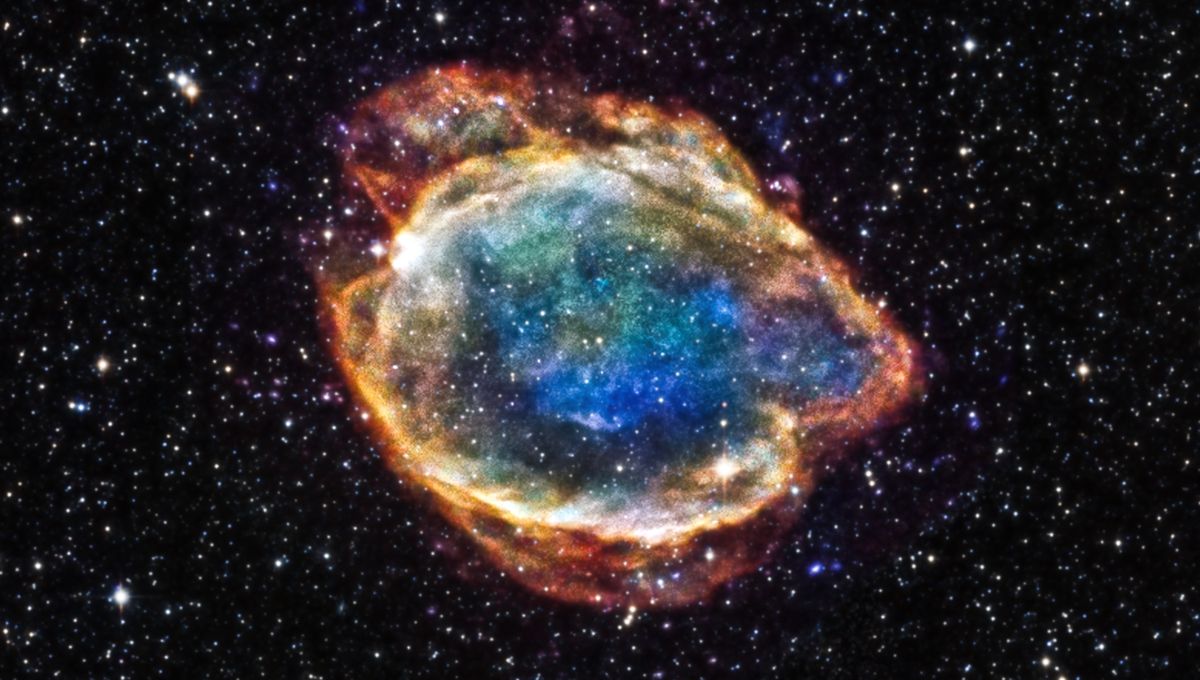
Astronomers have performed the most precise measurement of the composition of the universe yet using decades of supernovae observations. However, this comprehensive analysis still can’t answer one of the most curious discrepancies in astronomy.
Most of our universe is made of invisible components, dark energy and dark matter. According to the new analysis, dark energy makes up about 66.2 percent of the energy-matter content of the universe. The remaining 33.8 is made of matter, which dark matter makes up five-sixths. The high precision is a fantastic result but it also shows that once again there’s something we are missing in our understanding of the universe.
The standard model of cosmology is the theory that describes the evolution of the universe. The existence of dark matter and dark energy has not been confirmed experimentally but it is crucial to this model. The analysis, dubbed Pantheon+, is the best data yet supporting this. Using the analysis of 1,550 Type Ia supernovae, they show that while the dark components remain a mystery, they are by far the best model we have.
“With these Pantheon+ results, we are able to put the most precise constraints on the dynamics and history of the universe to date,” lead author Dillon Brout, an Einstein Fellow at the Center for Astrophysics | Harvard & Smithsonian, said in a statement.
“We’ve combed over the data and can now say with more confidence than ever before how the universe has evolved over the eons and that the current best theories for dark energy and dark matter hold strong.”
But there is a problem. The universe is expanding, but over the last several years, astronomers and cosmologists have discovered a discrepancy in how we measure the expansion rate of the universe. The parameter we call the Hubble constant has been measured with different methods and depending on which is used, it gives two very different numbers. Locally measured estimates of the universe’s expansion rate and the measurement calculated from the cosmic microwave background don’t agree. This is known as the Hubble tension.
In particular, the data pushes the tension beyond five sigmas, the so-called gold standard of scientific certainty. There is about a one-in-a-million chance that the tension is due to a fluke rather than a real effect or a measurement issue, and so, despite the new precise measurements, the Hubble tension remains.
“We thought it would be possible to find clues to a novel solution to these problems in our dataset, but instead we’re finding that our data rules out many of these options and that the profound discrepancies remain as stubborn as ever,” Brout explained.
The oldest supernova in the dataset is 10.7 billion years old. Back then the universe was dominated by dark matter. At some point in the following billion years, dark energy became the dominant force leading to the accelerated expansion of the universe we see today. A better understanding of this switch-over epoch with more data may provide insight into the nature of dark energy and maybe even solve the mystery of the Hubble tension.
The study is published in The Astrophysical Journal.
Source Link: Most Precise Measurement Of The “Dark” Universe Still Hints At Something Unexplained